The Quintessential Summer Kaga Vegetable: “Kaga Futo-kyuri Cucumber.” Discover the Passion of the Master Growers Cultivating These Fully Potential Fruits in Sandy Soil.
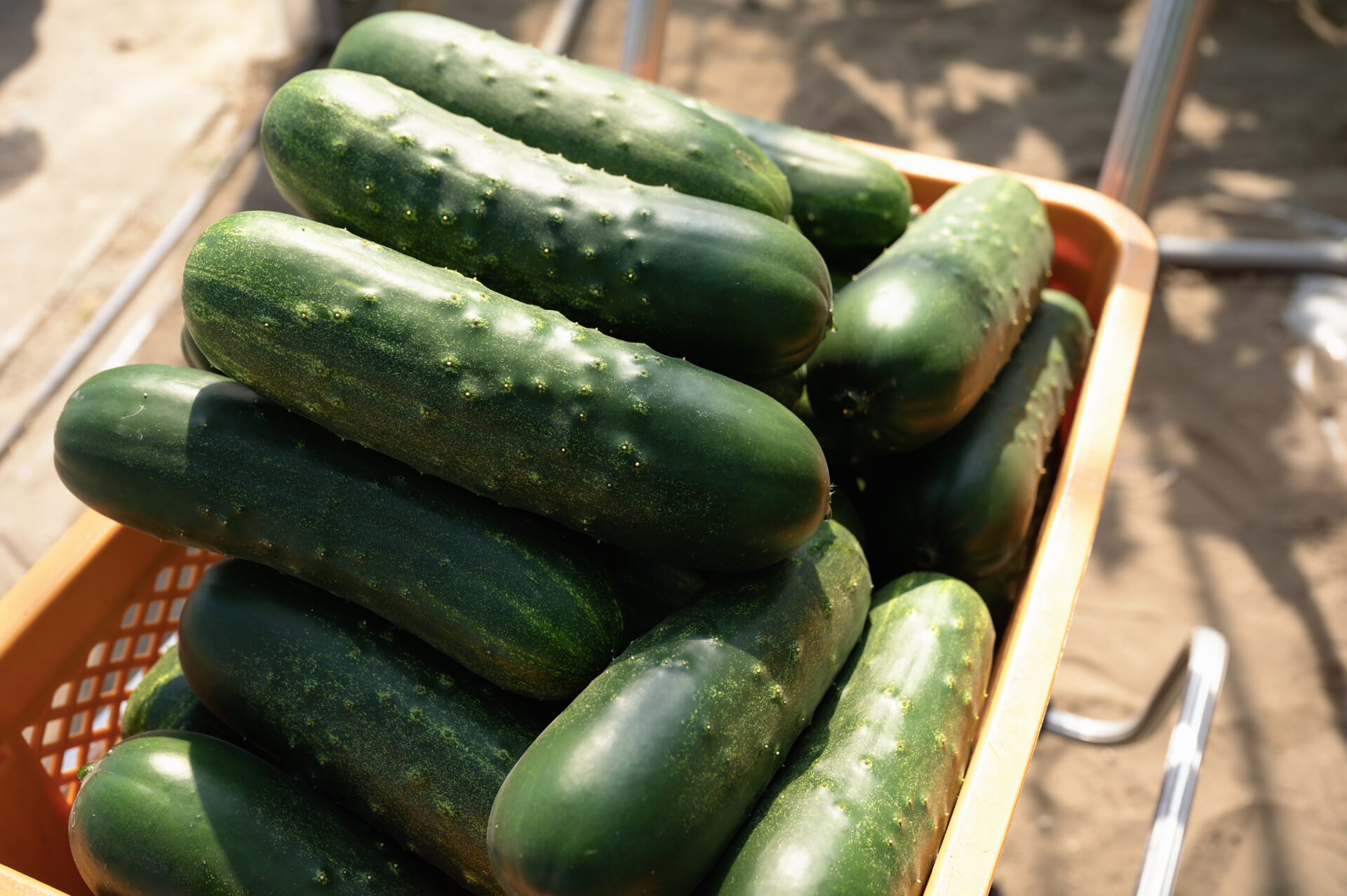
Produced in Kanazawa for Over 80 Years, the Original Shape Was Surprisingly a “Yellow Triangle.”
The taut, firm fruit with protruding spines and considerable weight in the hand speak to its freshness. Kaga futo-kyuri cucumber is prized for its refreshing flavor and appealing texture. As its name suggests, its size is characterized by a length of 22-27 cm and a diameter of 6-7 cm. Each cucumber weighs about 600-800 grams, the equivalent of about 6-8 regular cucumbers. Although there are different types of cucumbers, this thick and hefty variety is reportedly rare nationwide.
Composed of 96% water, it contains calcium and potassium, which help neutralize the body’s acidic tendency, and also possess diuretic and skin-improving effects.
Utsugi Town, Kanazawa City, Ishikawa Prefecture, is located near the coast. Here, agriculture thrives by taking advantage of the area’s distinctive sandy soil. From early spring to early fall, “Kaga futo-kyuri cucumber” takes center stage. Currently, 12 producers, known as the “JA Kanazawa City Sand Dune Area Collection and Shipping Center - Kaga futo-kyuri cucumber Division” (hereafter referred to as the Kaga futo-kyuri cucumber Division), cultivate about 2.9 hectares in more than 170 greenhouses and ship about 90,000 boxes annually. We visited the greenhouse of Mitsuaki Matsumoto of the Kaga futo-kyuri cucumber Division.
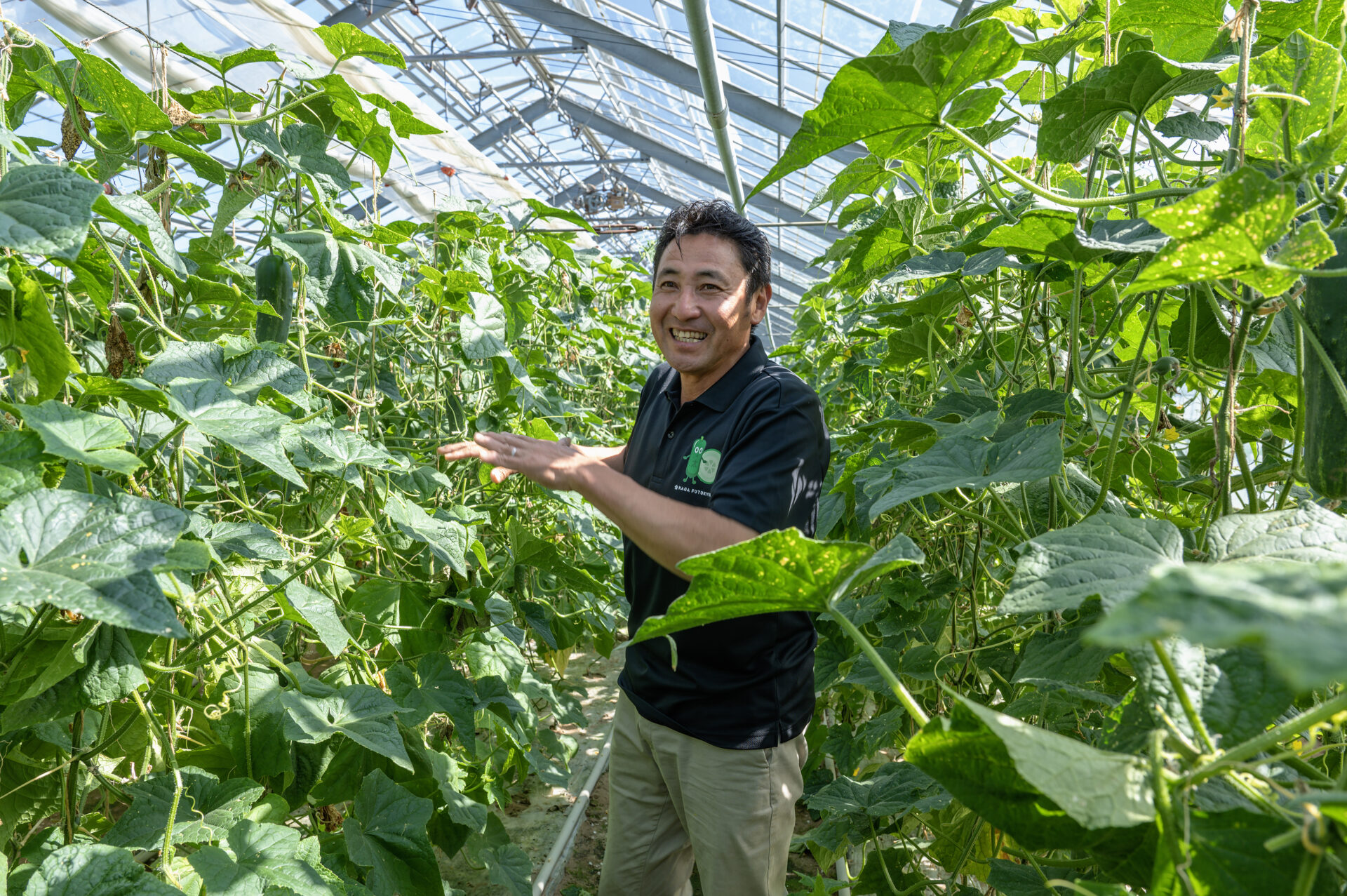
Cultivation in Kanazawa began more than 80 years ago, in 1940, when a fruit and vegetable merchant in Kanazawa imported seeds from Gifu Prefecture. The original shape resembled a melon and was said to be triangular with a yellow hue. It then naturally crossed with the “Kanazawa Fushinari cucumber,” resulting in a rounder shape and a color change from yellow to deep green, leading to its current form. In 1952, with the expansion of cultivation, it was named “Kaga futo-kyuri cucumber,” and around 1970, the cultivation area was moved from Minma in Kanazawa City to Utsugi Town.
By the time Mr. Matsumoto began cultivating, and the current form of “Kaga futo-kyuri cucumber” was already established. Current sizes range from 2S to 2L. In the past, L was standard, but with the trend toward nuclear families, S and M sizes are now predominantly harvested.
No Compromises in the Choice of the Perfect “Partner” Rootstock.
The roots of “Kaga futo-kyuri cucumber” are weak, making repeated cultivation in the same place and long-term harvesting difficult. To overcome this, they are grown by grafting roots from plants such as pumpkins, which are disease-resistant and have vigorous growth. Mr. Matsumoto recalls struggling to find a compatible rootstock (the base plant for grafting). “We tested whether pumpkins or bottle gourds were better, experimenting with different manufacturers and different pumpkin varieties. We’ve been using the current rootstock for about three years. While results have been stable, there are still characteristics not fully leveraged, so we continue studying and improving,” says Mr. Matsumoto.
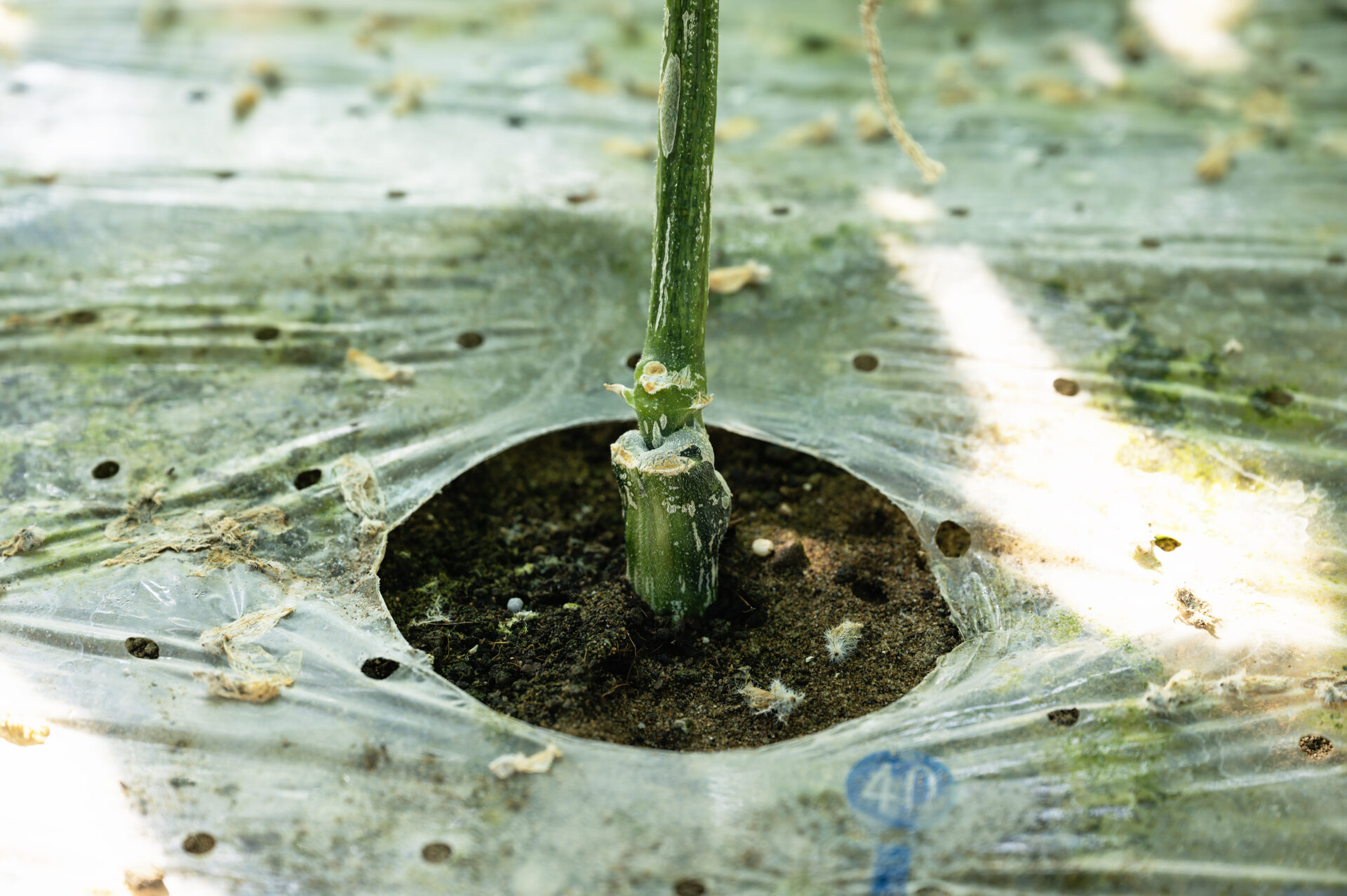
The grafted seedlings are typically planted in greenhouses around February 20 each year. Since it is still cold, heating is used to promote growth. To facilitate fruit setting, the vine is split into two branches per plant. Once the flowers bloom, the buds emerging from the same node are pinched off to ensure that sufficient nutrients reach the fruit at the base of the flower (ovary). From there, it takes about two weeks for the fruit to grow to harvestable size. Approximately 10 fruits are harvested from each vine per season. Unfortunately, fruits that are bent or taper off cannot be sold as products.
Compared to ordinary cucumbers, “Kaga futo-kyuri cucumber” plants tend to grow dense foliage. If the fruit does not receive sufficient sunlight, it cannot store enough nutrients, making frequent leaf maintenance essential. While the quality and yield remain consistent, the fruiting pattern is still unpredictable. “Ordinary cucumbers have been selectively bred to produce one fruit per node, a trait known as ‘node bearing.’ However, the fruiting of ‘Kaga futo-kyuri cucumber’ is irregular; there are times when fruits appear and times when they don’t, and some vines grow only foliage without producing fruit. Growth conditions vary depending on the grower and the season. We are currently researching what actions and timings can promote fruiting.”
Timing is Everything for Water and Fertilization: Cultivating by Listening to the Delicate Vines' Signals.
The approach to watering and fertilizing is meticulous. Because sandy soil dries out quickly, growers constantly monitor whether the plants have enough water. Water is drawn from about 100 meters below ground, and fertilizer is applied at optimal times, such as when enlarging the fruit. It’s a challenge because over-fertilization can prevent fruiting. When there is an abundance of fruit, fertilization alternates between root applications and foliar sprays to allow the vines to recover and prepare for the next fruit cycle.
In addition, because sandy soil is low in organic matter, ample organic fertilizer is used to improve water retention, nutrient retention, and flavor quality.
In recent years, the intense summer heat has made irrigation more challenging, and growers have also had to contend with “leaf scorch.” “When it’s hot, the color fades and turns yellowish, making it difficult to achieve the deep green typical of ‘Kaga futo-kyuri cucumber.’ We have experimented with various methods, such as misting and applying shading materials to the greenhouses.”
Simply removing the greenhouse plastic because of the heat is not an option. It could lead to insect infestations, fruit damage from strong sea breezes, and an increased susceptibility to disease when it rains.
While there are challenges unique to traditional vegetable farming, Mr. Matsumoto finds joy in the effort required. “This shows that there is still a lot of potential for the ‘Kaga futo-kyuri cucumber,’” he says with a twinkle in his eye. “These problems are not something that AI or IoT can solve. It’s difficult, but I think it’s something that needs to be evaluated with human judgment. It’s like raising your own child.”
Seeds Preserved Only in the Utsugi Area: What Future Lies Ahead for the Younger Successors?
In 2007, “Kaga futo-kyuri cucumber” was registered as a regional collective trademark, joining the ranks of “Kaga-renkon lotus root,” “Kinjiso,” and “Gensuke-daikon” as “Kaga vegetables” trademarks. This led to increased recognition, but prior to that, Mr. Matsumoto’s predecessor farmers faced significant challenges. There were times when the supply-demand balance was mismanaged, prices were low, and sales were sluggish. For this reason, Mr. Matsumoto is deeply committed to the inheritance and preservation of the traditional “Kaga futo-kyuri cucumber,” which has been cultivated in Utsugi Town for over 50 years.
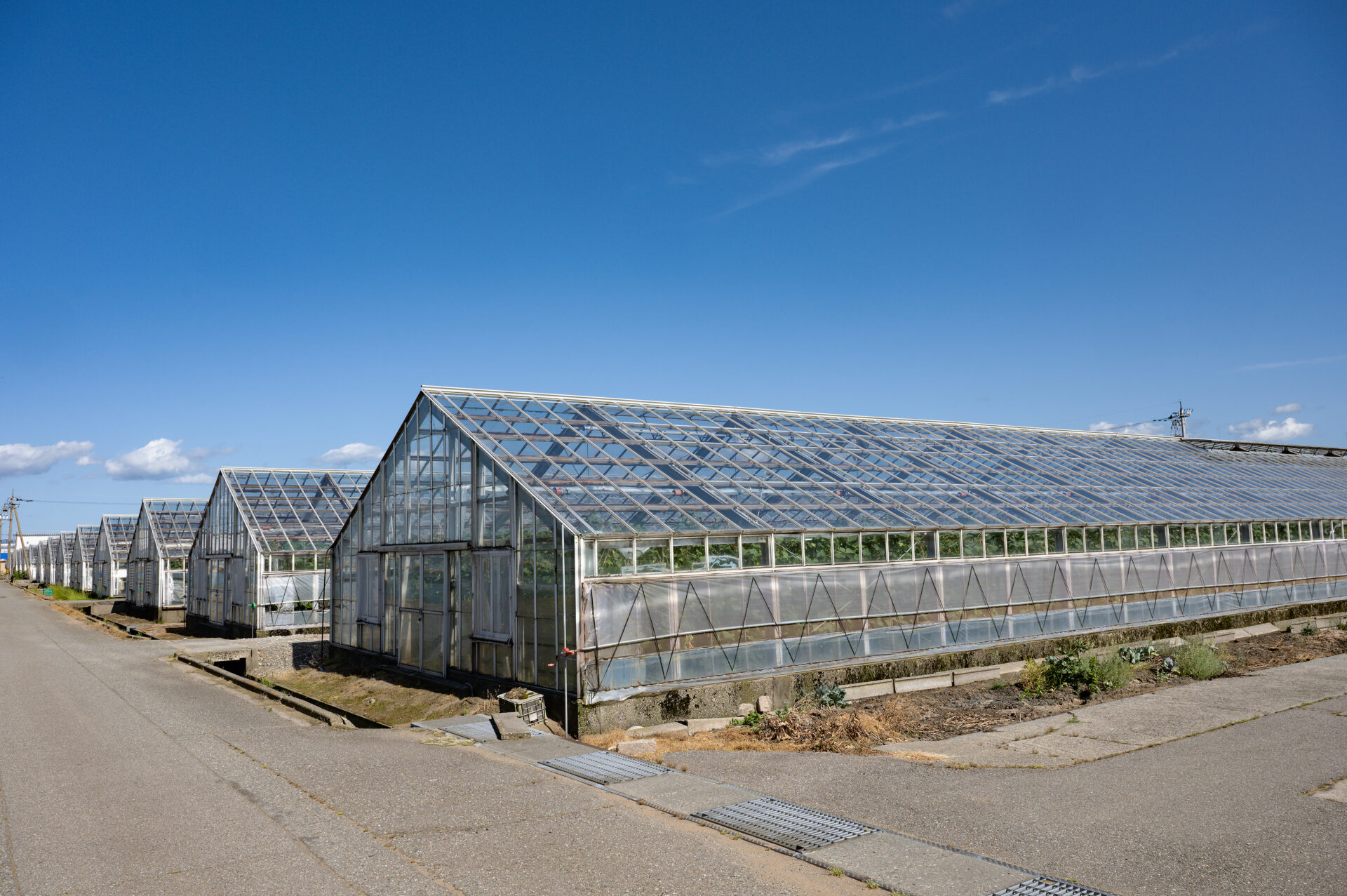
In the past, the seeds harvested here were never distributed outside the Utsugi Town growers in the Yasuhara area. To prevent the seeds from dying out, only selected seeds were grown within the division, and only the permanent members of the division cultivated the “Kaga futo-kyuri cucumber” in what could be described as a “closed world.” However, now even new members who join the division are able to grow it. Furthermore, Mr. Matsumoto and some dedicated colleagues founded a company called “Kanazawa Agri-Pride Co., Ltd.,” which purchased the increasing amount of fallow land in Utsugi Town due to the aging farming population, and used it to grow “Kaga futo-kyuri cucumber” as well. This initiative has allowed for a stable supply without reducing production volume.
In addition, despite the nationwide decline in the agricultural population, relatively young successors are actively involved in the “Kaga futo-kyuri” division. “The producers are getting younger, with many now in the second or third generation. The succession is progressing well, so I hope it will become a long-lasting crop,” Mr. Matsumoto says with a gentle smile.
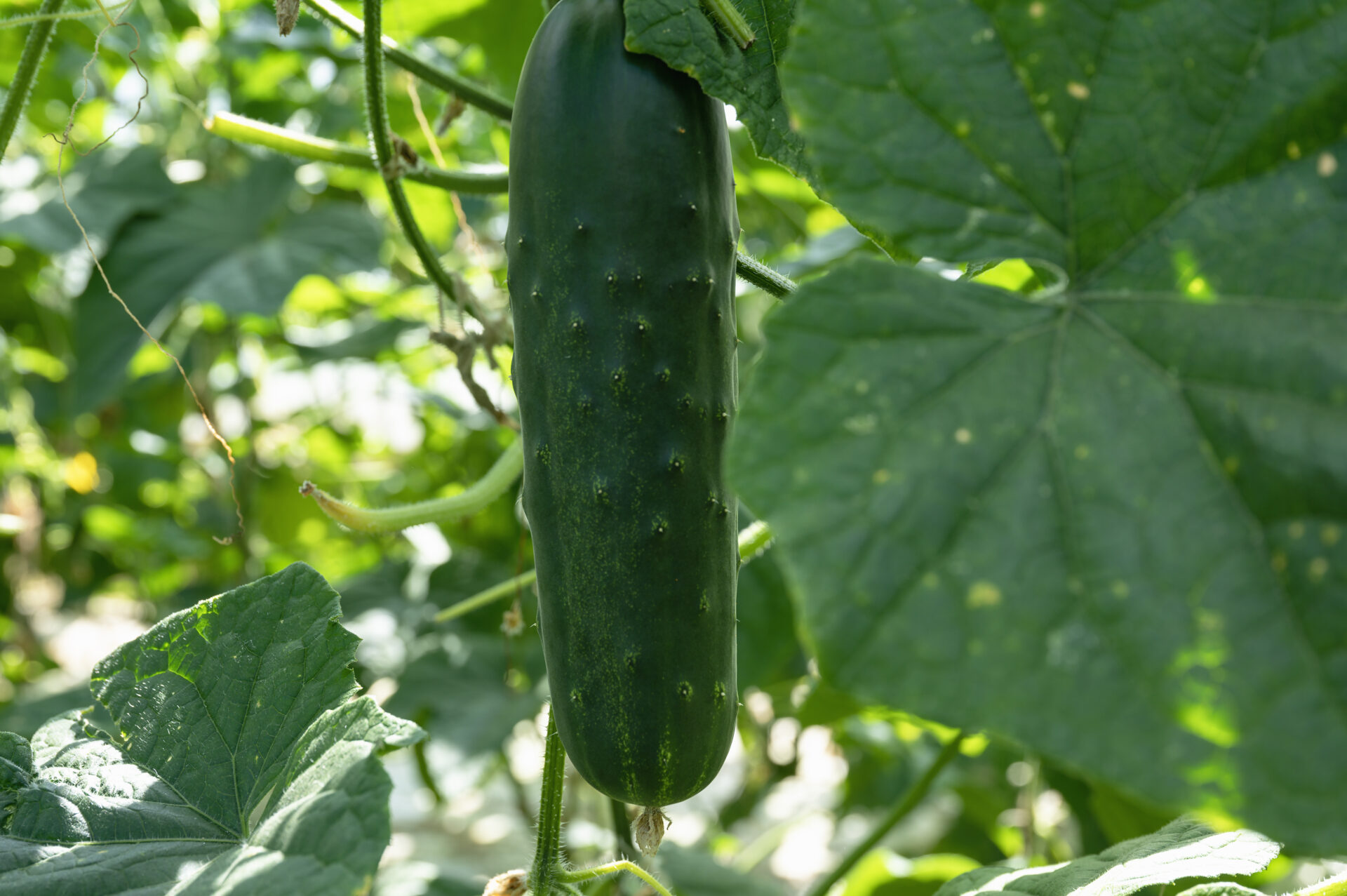
Mr. Matsumoto is actively involved not only in cultivation, but also in promotional activities throughout the country. He organizes matching events to discover new demand, introduces the fields to elementary school students outside the prefecture through online sessions, and familiarizes local elementary school students with the vegetable by holding tasting events at their schools, all to promote it through food education initiatives.
With Spring Comes the Season of “Kaga Futo-kyuri Cucumber”: Enjoy It in Ankake or Lightly Pickled.
Twelve dedicated farming households cultivate the “Kaga futo-kyuri cucumber” with great care. In Kanazawa, this cucumber is commonly enjoyed in dishes such as vinegar preparations and ankake (a thick, starchy sauce). In the Matsumoto household, ankake is a staple; they enjoy it warm in early spring and chilled in the summer months. It’s also common to substitute the “Kaga futo-kyuri cucumber” for the eggplant in the traditional Kanazawa dish “nasu somen” (boiled eggplant with somen noodles in a warm broth).“My top recommendation is to simply enjoy it as a light pickle. It’s also great mixed into kimchi,” he notes.
Yet, the “best way to really enjoy it,” by the way, is to “eat it while it’s fresh.”
Eager to try the freshly harvested “Kaga futo-kyuri cucumber” at home, I peeled it, removed the seeds, and combined it with other vegetables to make a salad. The refreshing texture was incredibly cooling, and the pleasant aroma was enchanting. The presence of the “Kaga futo-kyuri cucumber” transformed an ordinary salad into a special dish.
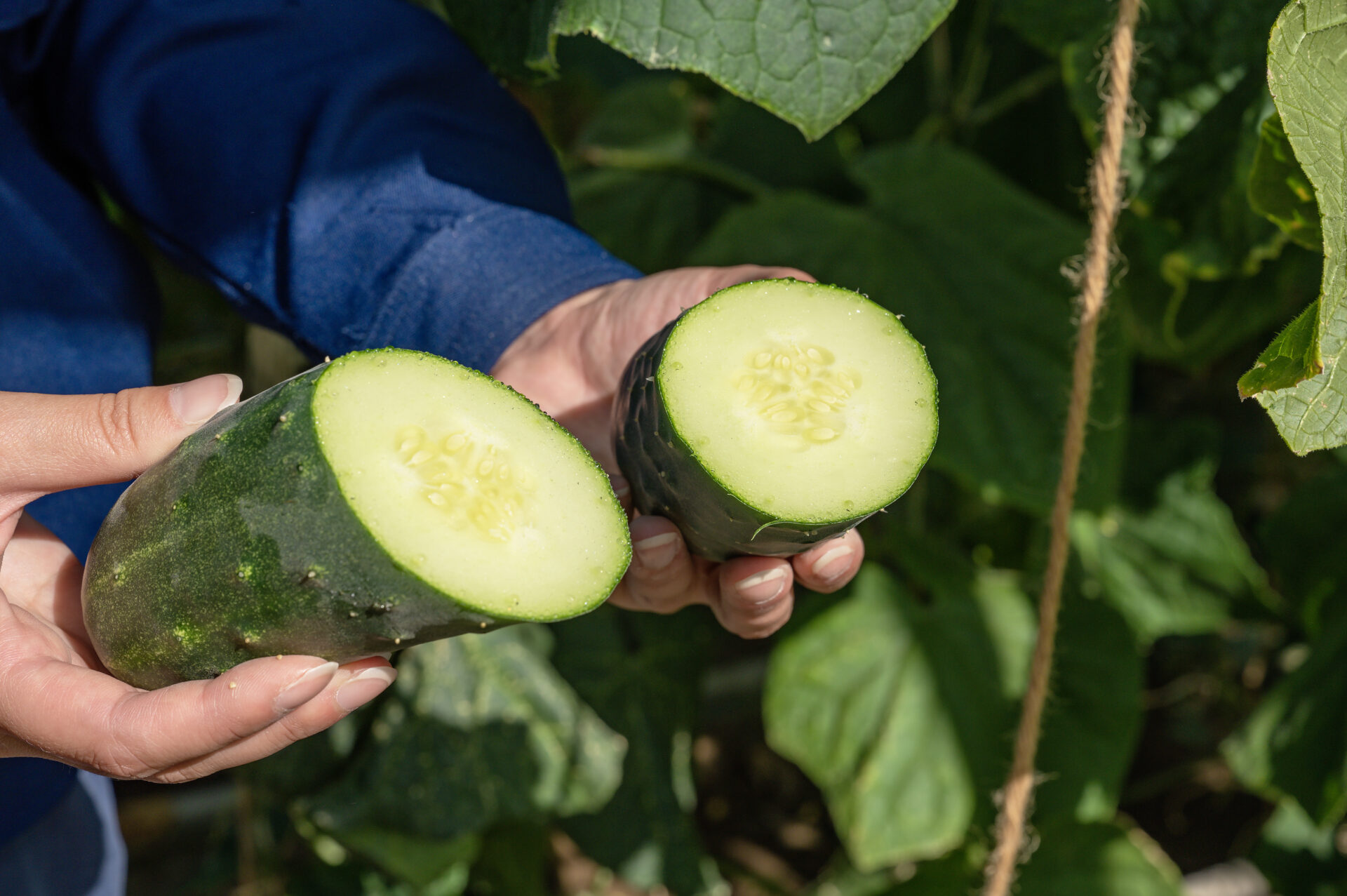
Born in Minma, Kanazawa, and grown in the sandy soil of Yasuhara, the “Kaga futo-kyuri cucumber” carries a weight that embodies the passion of all the members of the division. Whether on hot summer days or during the slightly chilly early autumn, its refreshing flavor is sure to enrich your table.